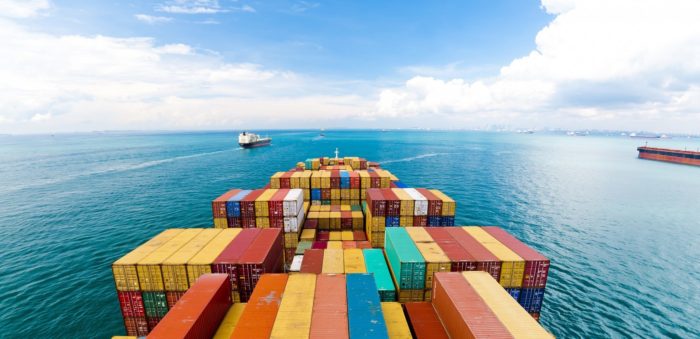On the occasion of World Maritime Day, celebrated on 29 September under the theme “Shipping: indispensable to the world”, Eurostat, the statistical office of the European Union, is publishing a selection of data on international trade in goods by sea as well as on maritime freight transport.
Maritime transport plays an essential role in the international trade in goods of the European Union (EU). In 2015, the value of EU trade in goods with third countries (non-EU countries) carried by sea was estimated at close to €1,777 bn, accounting for about 51% of EU trade in goods. In detail, 53% of EU imports entered the EU by sea, while shipping represented 48% of EU exports to third countries.
The use of maritime transport for EU trade in goods has slightly increased over the last ten years: in 2006, less than half (47%) of the EU trade in goods with third countries was conducted by sea. Rotterdam, Antwerp and Hamburg, all located on the North Sea coast, were the top 3 EU cargo ports in 2014, accounting together for almost a fifth (19.2%) of the gross weight of goods handled in EU ports.

Portugal, Cyprus and Greece on top for international trade in goods by sea
Shipping was the main mode of transport in a majority of Member States in 2015. The highest shares of trade in goods with non-EU countries carried by sea were recorded in Portugal (81% of trade value), Cyprus (80%), Greece (77%), Spain (74%), Malta (67%), Italy (61%) and Finland (60%). Shares of over 50% were also reported by the Netherlands, Romania, Bulgaria, Denmark and Germany.
At the opposite end of the scale, maritime transport was less significant in the extra-EU trade in goods of the Czech Republic (12%) and Luxembourg (19%), followed by Ireland and Latvia (both 27%), Austria (31%) and Croatia (35%).


Rotterdam busiest port for handling goods
The total gross weight of goods handled in EU ports was estimated at close to 4 billion tonnes in 2014. The ten largest EU cargo ports accounted for nearly one-third of the total tonnage of goods handled in EU ports. With nearly 422 million tonnes of goods handled, or 11% of the EU total, Rotterdam in the Netherlands was the busiest cargo port in 2014, followed by Antwerp in Belgium (180 mn tonnes, 5%), Hamburg in Germany (126 mn tonnes, 3%), Amsterdam in the Netherlands (97 mn tonnes, 3%), Algeciras in Spain (76 mn tonnes, 2%) and Marseilles in France (74 mn tonnes, 2%).

The European Union (EU) includes Belgium, Bulgaria, the Czech Republic, Denmark, Germany, Estonia, Ireland, Greece, Spain, France, Croatia, Italy, Cyprus, Latvia, Lithuania, Luxembourg, Hungary, Malta, the Netherlands, Austria, Poland, Portugal, Romania, Slovenia, Slovakia, Finland, Sweden and the United Kingdom.
International trade in goods statistics presented in this News Release are provisional figures based on information provided by Member States. They are subject to frequent revision for up to two years after the year in question. Furthermore, national concepts may differ from the harmonised methodology used by Eurostat, leading to differences between figures in this release and those published nationally.
The modes of transport considered in the methodology for the statistics on the trading of goods are the following: Air, Fixed installation (including pipelines), Inland waterways, Post, Rail, Road, Sea, Self propulsion, Unknown.
It should be noted that this analysis refers only to extra-EU trade, meaning trade of goods with non-EU countries. For extra-EU trade, the mode of transport corresponds to the active means of transport by which, on export, the goods are presumed to have left the statistical territory of the European Union and, on import, the goods are presumed to have entered the statistical territory of the European Union.
For maritime ports freight statistics, data are presented at the level of “statistical ports”. A statistical port consists of one or more ports, normally controlled by a single port authority, able to record ship and cargo movements.
The gross weight of each consignment is the weight of the actual goods together with the immediate packaging in which they are being transported from origin to destination, but excluding the tare weight of containers or Ro-Ro units (e.g. containers, swap bodies and pallets containing goods as well as road goods vehicles, wagons or barges carried on the vessel).
For further details you may read the report below
Source: EU Commission
































































